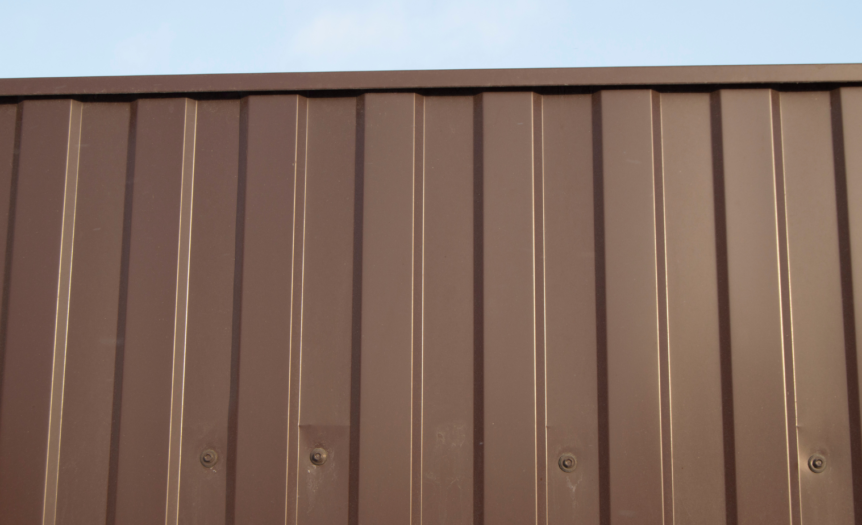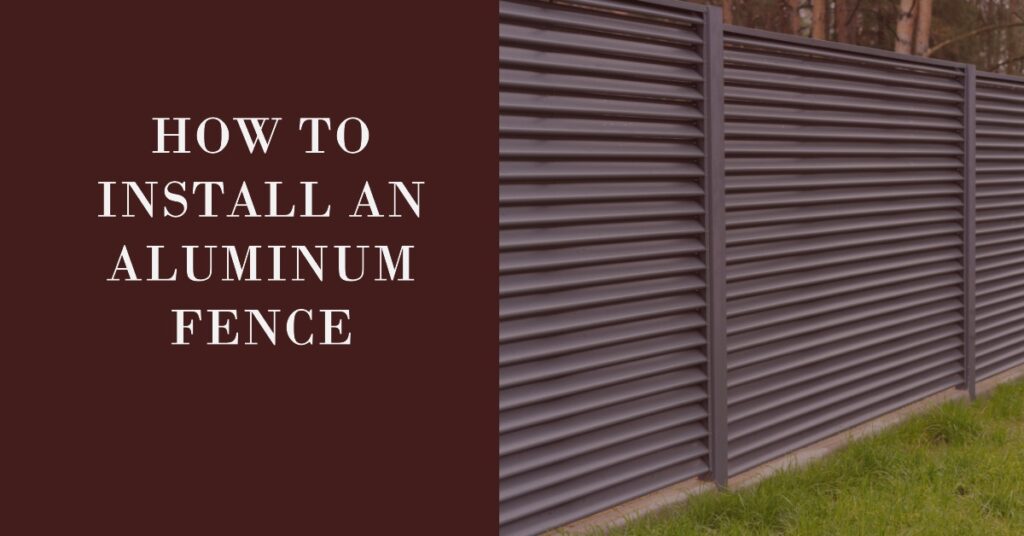Are you looking to enhance the appearance and security of your property with a durable, low-maintenance, and aesthetically pleasing fencing option? Look no further than aluminum fencing! This versatile and lightweight material has become increasingly popular among homeowners who want their DIY fence installation to be both cost-effective and hassle-free.
Now lets go through everything you need to know about how to install an aluminum fence, from preparation to maintenance.
Preparing For Installation Of An Aluminum Fence
Before beginning the installation process, it is crucial to check and comply with the zoning and building codes in your area.
Check Zoning And Building Codes
Before diving into your aluminum fence installation project, it’s crucial to familiarize yourself with local zoning and building codes. These regulations exist for the safety and harmony of your neighborhood while ensuring that any construction work adheres to a uniform standard.
Start by contacting your local zoning office, homeowners’ association, or city hall to obtain information on fencing code requirements specific to your area. Be sure to ask about height restrictions, setback distances from property lines, corner visibility guidelines for fences near streets or driveways, as well as any permits needed before starting the project.
Moreover, some areas might have strict rules when installing pet fences or child safety fences due to their unique features designed specifically for their purpose.
Gather Necessary Tools And Materials
Before installing an aluminum fence, it is important to gather all the necessary tools and materials. This will ensure a smooth and efficient installation process. Some of the essential tools include a posthole digger, level, measuring tape, saw or hacksaw, drill with screwdriver bits, and a hammer.
You will also need to purchase the appropriate aluminum fence panels and gates that are suited for your project. Be sure to consult with local zoning regulations before making any purchases to ensure that your fencing meets certain height requirements or other specifications.
Measure The Area And Plan The Layout
Before starting your aluminum fence installation, it’s important to measure the area accurately and plan the layout carefully. This will ensure that you have enough materials for the project, and that the finished fence looks even and professional.
Measure each side of your property carefully with a measuring tape or laser distance measurer, making note of any slopes or corners. Use these measurements to create a rough sketch of your fence layout on paper or in a digital program.
Consider any potential obstacles such as trees, rocks, or buildings that may affect where you can place your posts and panels. Planning ahead can help you avoid costly mistakes later on in the installation process.
It’s also important to check with local zoning laws and building codes before beginning construction, as some areas have specific regulations for fencing placement and design.
Steps To Install An Aluminum Fence
Dig post holes to the depth required by zoning and building codes, set posts in concrete, and allow it to dry completely before attaching horizontal rails and panels using screws or brackets.
Digging Post Holes And Setting Posts
Now it’s time to dig post holes and set your posts. This is an essential part of the fence installation process, as it determines the stability and longevity of your fence.
Use a post-hole digger to create holes that are about one-third the length of the posts you’re installing.
Before placing your fence posts in the ground, pour concrete into each hole for reinforcement. The concrete should be poured up to three inches below ground level to keep water from pooling around your post and causing corrosion over time.
Check all four corners with a level tool before letting them dry completely. If any adjusting is needed, do so immediately as this will become more difficult once dried cement sets in solidly around each post footings.
Attaching Rails And Panels
Now it’s time to attach the rails and panels to your aluminum fence. Start by attaching the bottom rail, securing it tightly with rust-free screws or brackets. Next, slide the top rail into place and secure that as well.
It’s important to make sure everything is level as you go along, double-checking with a spirit level regularly throughout this process.
Installing Gates And Hardware
When it comes to installing gates and hardware for your aluminum fence, it’s important to take extra care and attention. First of all, ensure that the gate posts are placed securely with concrete anchors in the ground.
Then attach hinges to the post, making sure they line up evenly.
If you’re installing a larger or heavier gate, consider adding an additional support wheel or caster to help distribute weight more evenly. It’s also important to regularly inspect and maintain any moving parts of the gate such as hinges or locks, ensuring they are well lubricated and functioning properly.
Taking Extra Precautions For Slopes And Corners
As experienced fence installers will tell you, installing a fence on slopes and corners can pose some unique challenges.
When dealing with slopes or hills, it’s crucial to adjust your post hole depth accordingly so that each post sits at the same height above ground level. Additionally, you may need to install longer posts at intervals along the slope for added stability.
By planning ahead and taking these extra measures, you can ensure that your aluminum fence will not only look great but will also stand up against any inclines or turns in your yard or property.
Tips And Tricks For A Safe And Successful Installation
To ensure a smooth and safe installation process, it’s important to use high-quality materials and hardware, follow safety guidelines, seek professional help if needed, and consider decorative fencing options.
Use Quality Materials And Hardware
Using quality materials and hardware is vital to ensure the longevity and durability of your aluminum fence. This includes using high-grade aluminum for the fence panels, sturdy posts, and reliable gates that can withstand harsh weather conditions.
Additionally, choose hardware that matches the quality of your fencing material. Using low-quality screws or brackets may lead to rusting or corrosion over time which could compromise the stability of your entire fence system.
Opt for stainless steel or powder-coated hardware specifically designed for outdoor use to avoid these issues down-the-line.
Follow Safety Guidelines
When installing an aluminum fence, safety should always be a top priority. It’s important to take precautions to prevent injuries and accidents during the installation process.
One of the most important safety guidelines is to wear protective equipment such as gloves, goggles, and work boots.
Another crucial safety measure is to use proper tools and equipment for each task involved in the installation process. For example, using a power drill instead of a hand screwdriver can speed up the building process but also requires proper training from someone who knows how to handle it safely.
By following all appropriate safety protocols throughout your fence installation project, you’ll ensure that everyone stays safe while enjoying the benefits of their new fencing system.
Seek Professional Help If Needed
As much as I enjoy taking on a good DIY project, sometimes it’s best to leave certain tasks to the professionals. This is especially true when it comes to installing an aluminum fence.
For example, digging post holes can be a tedious and physically demanding task. If you don’t have experience with this type of work, you could easily injure yourself or damage your property in the process.
Additionally, correctly setting posts in concrete requires precision and knowledge of specific techniques that might not come naturally for someone diving into this kind of project for the first time.
So if at any point during your installation journey you feel overwhelmed or unsure about something, don’t hesitate to seek help from a professional contractor who specializes in fence installation.
Consider Additional Features Such As Decorative Fencing
When it comes to installing an aluminum fence, there are numerous options available for incorporating decorative features that can add both beauty and value to your property.
Some popular decorative fencing options include scrolling patterns, finials, and ornamental post caps.
Another option to consider is adding color to your aluminum fence through powder coating or painting. Powder coating provides a durable finish that resists rust, fading, and chipping while offering an extensive range of colors to choose from.
Ultimately, when considering additional features for your new aluminum fence installation project, select those that best suit your needs while keeping functionality in mind.
Maintenance And Care For Aluminum Fences
To keep your aluminum fence in top shape, regular maintenance is essential. Clean the fence periodically with soap and water to remove dirt and debris, and inspect it for any signs of damage or corrosion.
Touch up any chipped paint or coating, and adjust the fence as needed to ensure it remains level and secure.
Cleaning The Fence
One of the most important things you can do to maintain your aluminum fence is to keep it clean. Over time, dust, dirt, and other debris can accumulate on the fence and cause discoloration or even damage if left uncleaned.
To clean an aluminum fence, I prefer to use warm water mixed with a mild detergent in a bucket. Using a soft-bristled brush or sponge, gently scrub the surface of the fence until all dirt and grime are removed.
Rinse off any soap residue using a garden hose or pressure washer on a low setting.
Regularly cleaning your aluminum fence not only keeps it looking great but also helps extend its lifespan by preventing buildup from causing corrosion over time.
Inspecting For Damage
Regularly inspecting your aluminum fence for any signs of damage is an essential part of proper maintenance. This can help you identify any issues early on and prevent further damage or costly repairs.
If you notice any cracks or dents in the fence panels, it could be a sign that they have been damaged or bent out of shape. This can compromise the integrity of the entire fence, so make sure to replace any damaged pieces as soon as possible.
When inspecting your fence posts, look for signs of rust or corrosion since this can weaken the structure over time. If you notice these types of issues, consider applying a protective coating specifically designed for aluminum fencing to prevent further deterioration.
By regularly checking and maintaining your aluminum fence for damages like these examples mentioned above,you’ll help keep it looking great while also ensuring its long-term durability and effectiveness in keeping your property secure!
Touching Up Paint Or Coating
As with any outdoor fencing material, aluminum fences are exposed to various elements that can cause wear and tear over time. One way to keep your fence looking its best is by touching up the paint or coating as needed.
To touch up the paint or coating on your aluminum fence, start by cleaning the affected area thoroughly. You may need to use a wire brush or sandpaper to remove any rust or chipped coatings.
Once you have a clean surface, apply a fresh coat of paint or sealant using a brush, roller, or spray gun depending on the size of the area you’re covering.
By taking these steps regularly throughout the life of your aluminum fence, you’ll be able to maintain its appearance while ensuring it remains strong and durable for years to come.
Regularly Check And Adjust The Fence
As a responsible homeowner, it’s important to regularly check and adjust your aluminum fence to ensure its longevity and effectiveness. One of the key things to look out for is any signs of damage or wear that could compromise the stability of your fence.
To avoid more significant issues down the line, make sure you take action immediately if you notice any problems with your fence. This may involve tightening bolts or screws, replacing damaged sections of fencing, or even calling in a professional contractor for more complex repairs.
Conclusion
Installing an aluminum fence can be a great DIY project for those who want to enhance the beauty and security of their property. By following the steps outlined above, you’ll be able to install your own fence with confidence.
Remember to always follow safety guidelines and seek professional help if needed. With regular maintenance and care, your aluminum fence will continue to provide long-lasting protection for years to come.
Related Posts:
Dog Fence Ideas
Horizontal Fence ideas
How can you tell if a fence is yours?
How much does a Fence cost?
How to build a ground level deck?







